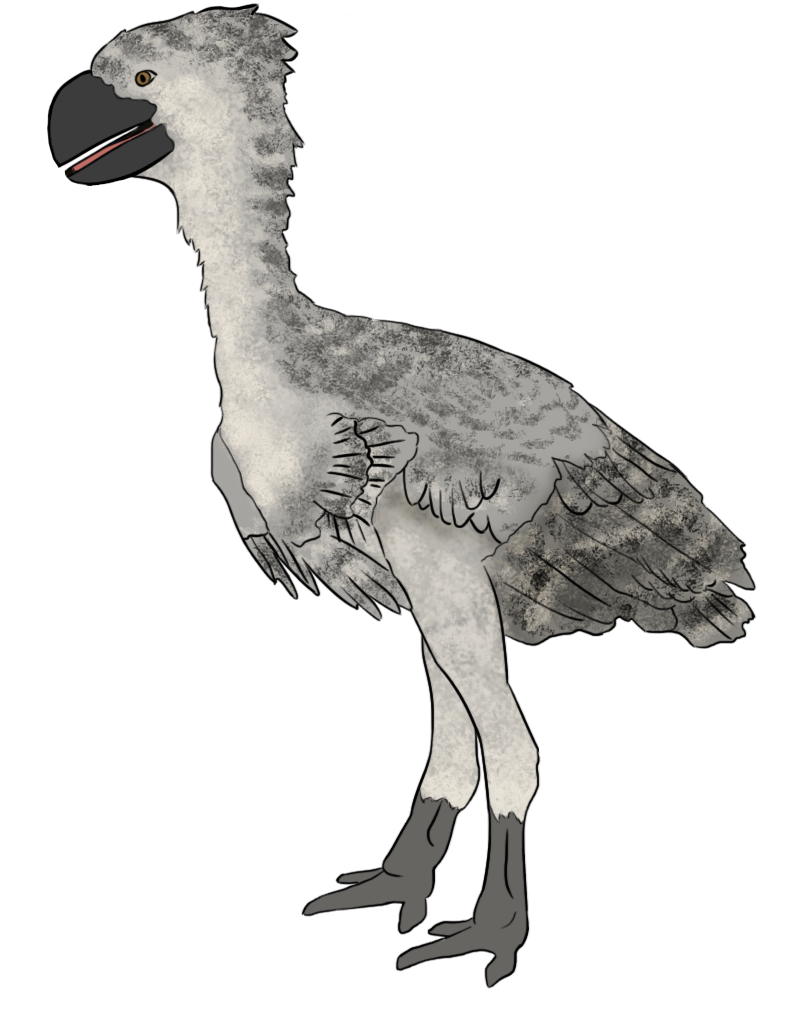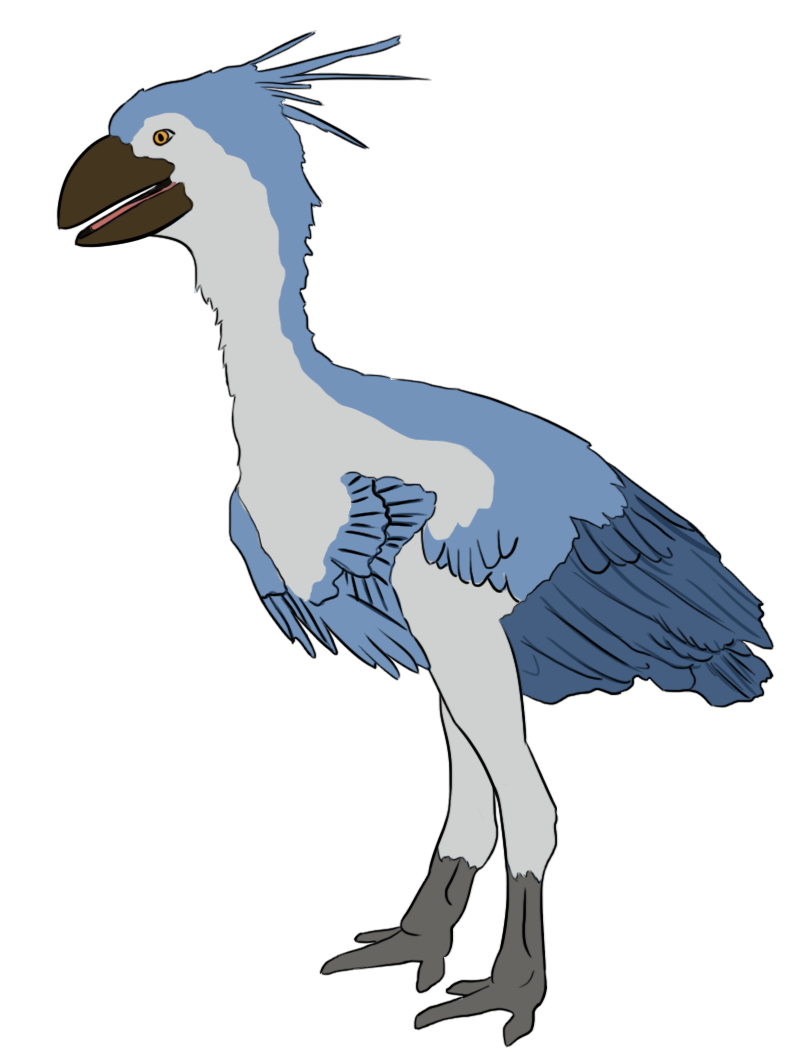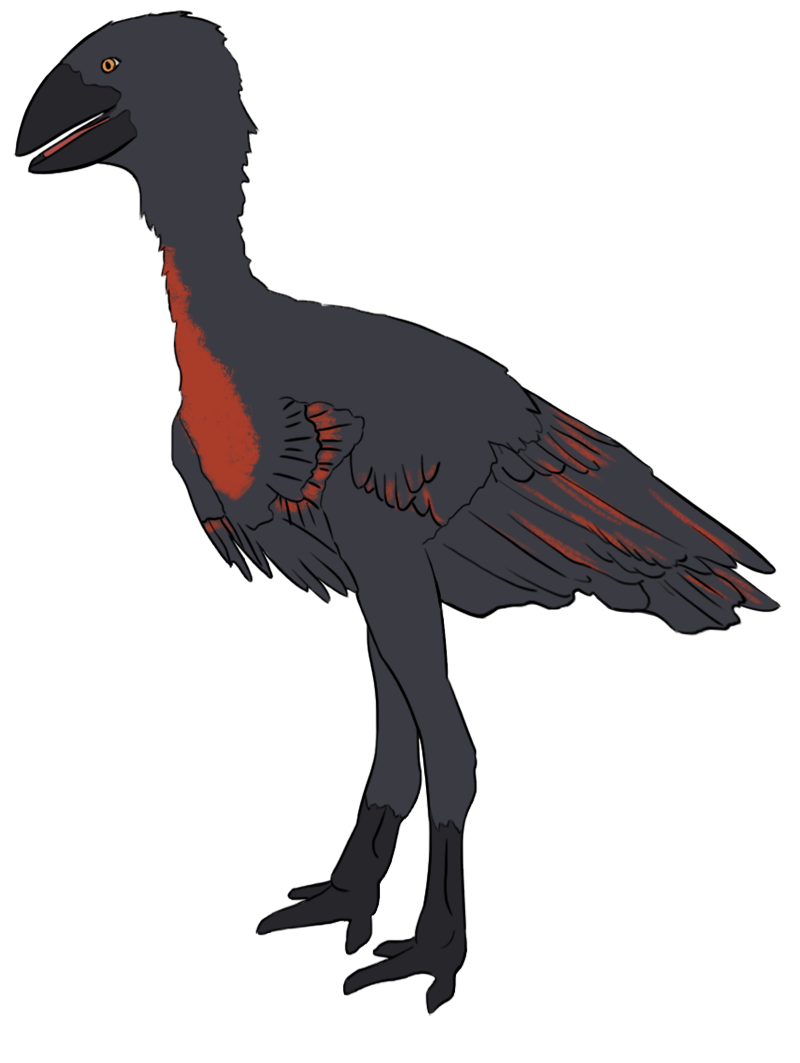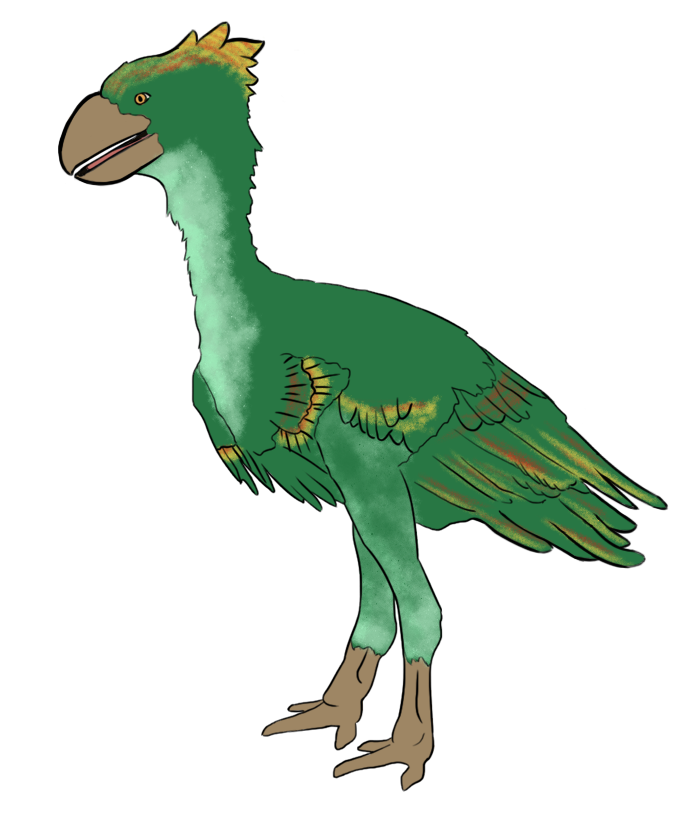Sarsen
Throughout much of Kaabara and southern Cuyania, sarsens are a common sight. They were originally domesticated from birds that roamed the forests of the former Valaran Empire, but have been found in many climates now for thousands of years. They have had enough time to branch into distinct breeds.
Breeds
Common Grey
This is the most widespread and common breed of sarsen. They are good, durable birds that make excellent mounts. This is because they have a smoother stride, so riders aren't jostled as much.
The consequence of this is that they tend to be slower than some other breeds, and can't reach the same max running speeds. They are the most commonly used sarsen for long-distance travel, carrying goods, or riding into battle.
The consequence of this is that they tend to be slower than some other breeds, and can't reach the same max running speeds. They are the most commonly used sarsen for long-distance travel, carrying goods, or riding into battle.
Crested Blue
This bird is popular in southern areas. They tend to overheat in the summer farther north. They are considered noble birds and popular with nobility and royalty, with great stock placed in their crests. They are less popular as working animals because the crest tends to get in the face of anyone riding them, and considered a nuisance while working.
Baanang Walker
This bird was bred by nomads on the Taalorang Steppe. It's shorter and stockier than most breed and has incredible endurance. They are able to get most of their water from their food and can go a long time between drinks, and their thicker feathers and compact bodies help them withstand the freezing winds on the open steppe. They have spread beyond Taalora, though they are more popular there than anywhere else.
Nightracer
These birds are renown for their speed, though they are a bit more fragile than other breeds. They are recognizable both from the smooth curve of their beak and heads and their distinctive colouring. Due to their speed, they are most often used for competitive racing, or sending important messages via a relay system.
They are sometimes called messenger's omen birds. According to an old story, a messenger raced to bring a king news of his son's death, and when he heard the news, the king was so devastated he stabbed the bird and splattered its feathers with blood.
Royal Toy
The toys are scoffed at by most working people, as they were bred to be colourful pets for the nobility. Wealthy children sometimes ride them, but they can't bear the weight of an adult. They come in many colours, usually something vibrant like bright red or green. Their beaks are sharper and hooked; hatchlings that have undesirable colours are sold to rat catchers and are exceptionally skilled at hunting rodents.
Despite their reputation as being decorative rather than workers, they are the cleverest sarsens. They require frequent stimulation to avoid growing bored and depressed and many an owner has discovered their home torn apart by a bored sarsen trying to figure out how things worked.
Basic Information
Genetics and Reproduction
They use the blunt talons on the toes to dig nests. The nests are a shallow pit with a ring of dirt, which are then filled with grass or leaves. They lay clutches of 3-4 eggs, with females staying with the nest to incubate them and then care for the young. During this period, the father brings food back to the nest for his mate and, later, offspring.
Dietary Needs and Habits
Sarsens are omnivores and will eat just about anything. Their favourite foods are nuts and berries; their large beaks originally evolved to crack open nuts. They will also dig for roots and tubers, and swallow stones to allow them to eat grasses and leaves. When available, they eat small rodents or lizards. This has aided them as domestic animals, as they are easy to feed with whatever surplus food the owner has to spare, or can be allowed to graze on grass.
Additional Information
Average Intelligence
They are very clever. Sarsens take directions well and can be trained to perform complex actions. They can solve puzzles to access food and recognize verbal commands.
Lifespan
30 years
Average Height
6'4"
Body Tint, Colouring and Marking
Varies, from dappled greys and browns to bright colours
Cover image:
Gastornis
by
Tim Bertelink (Modified by Nightfoot)







